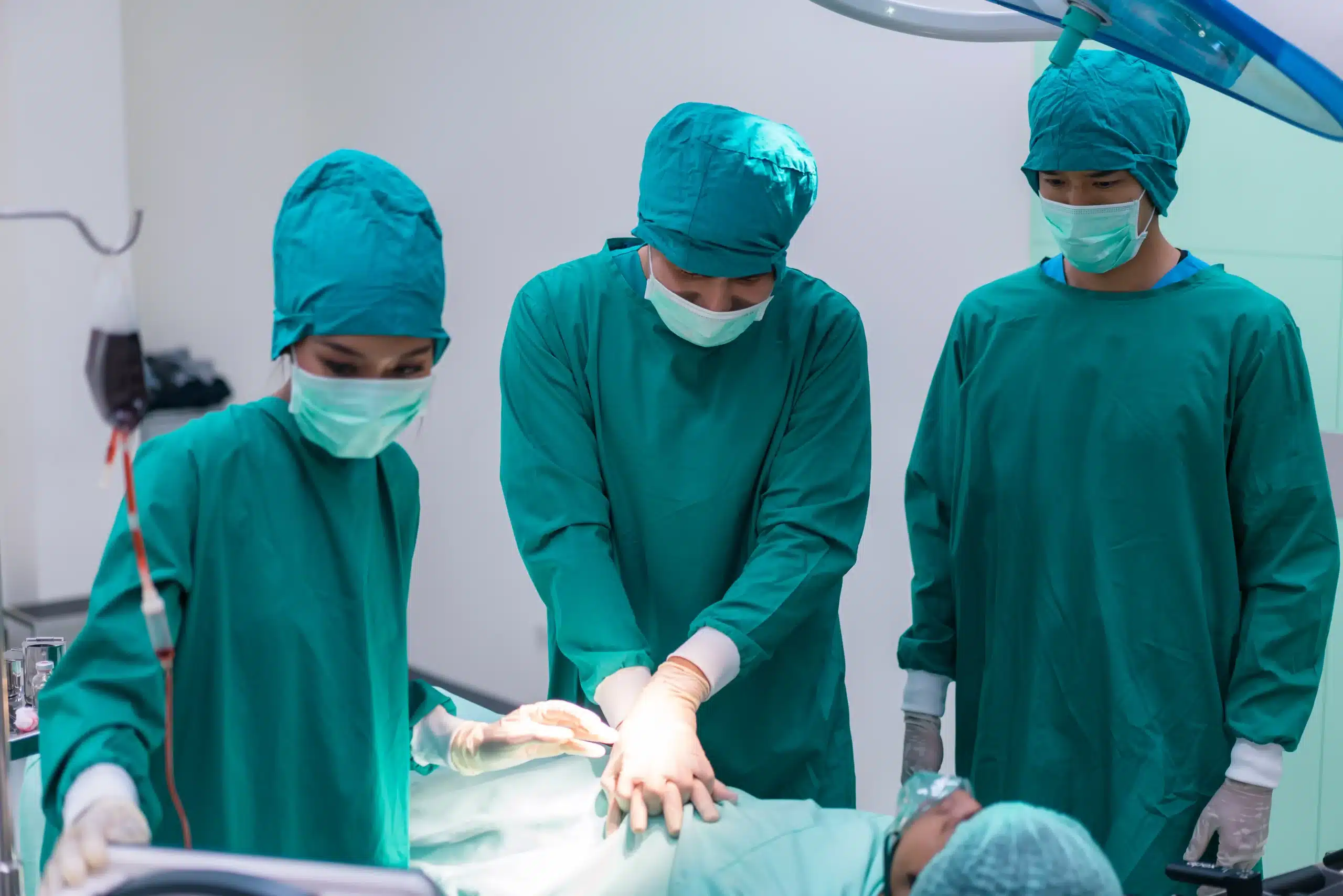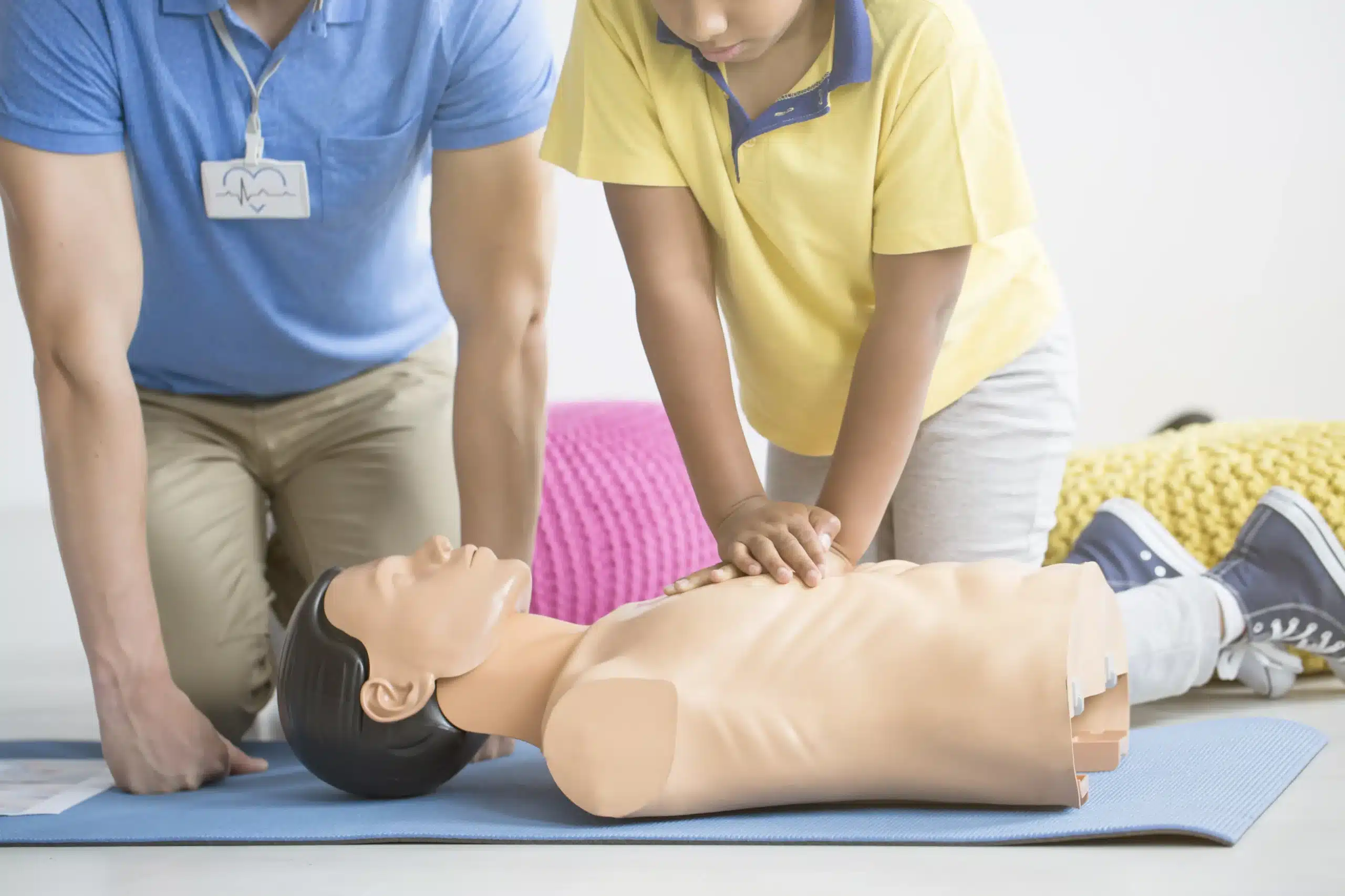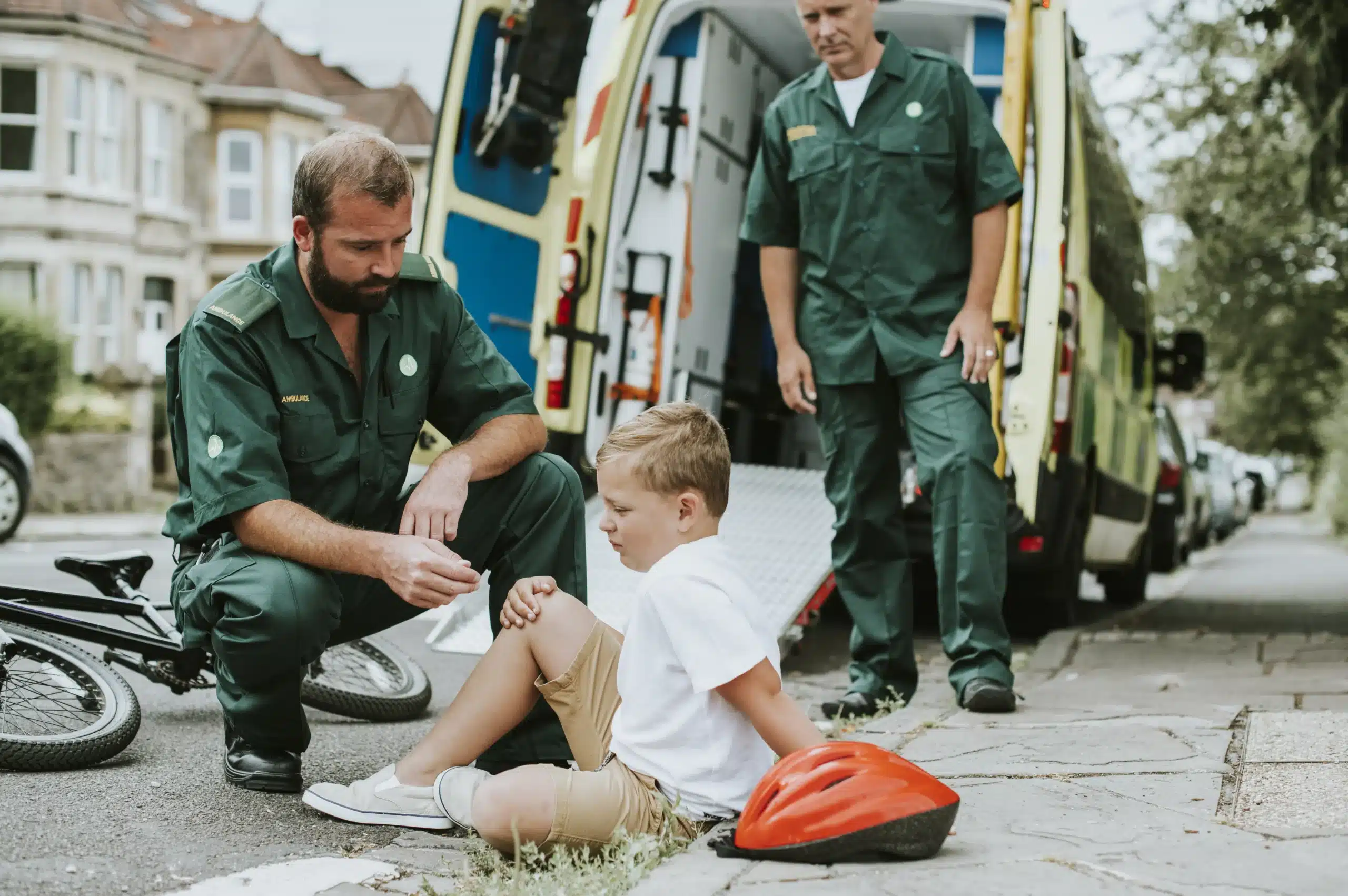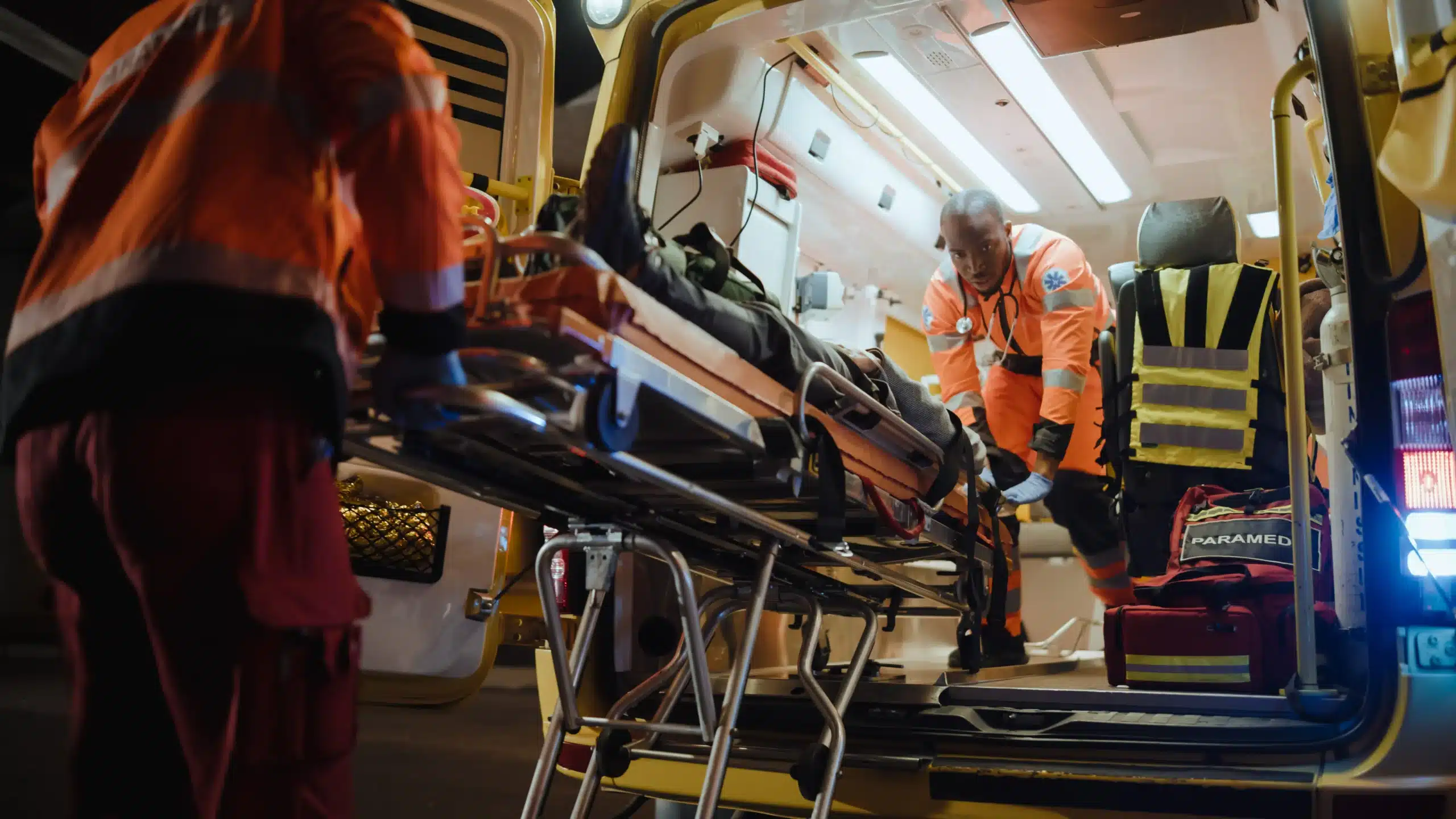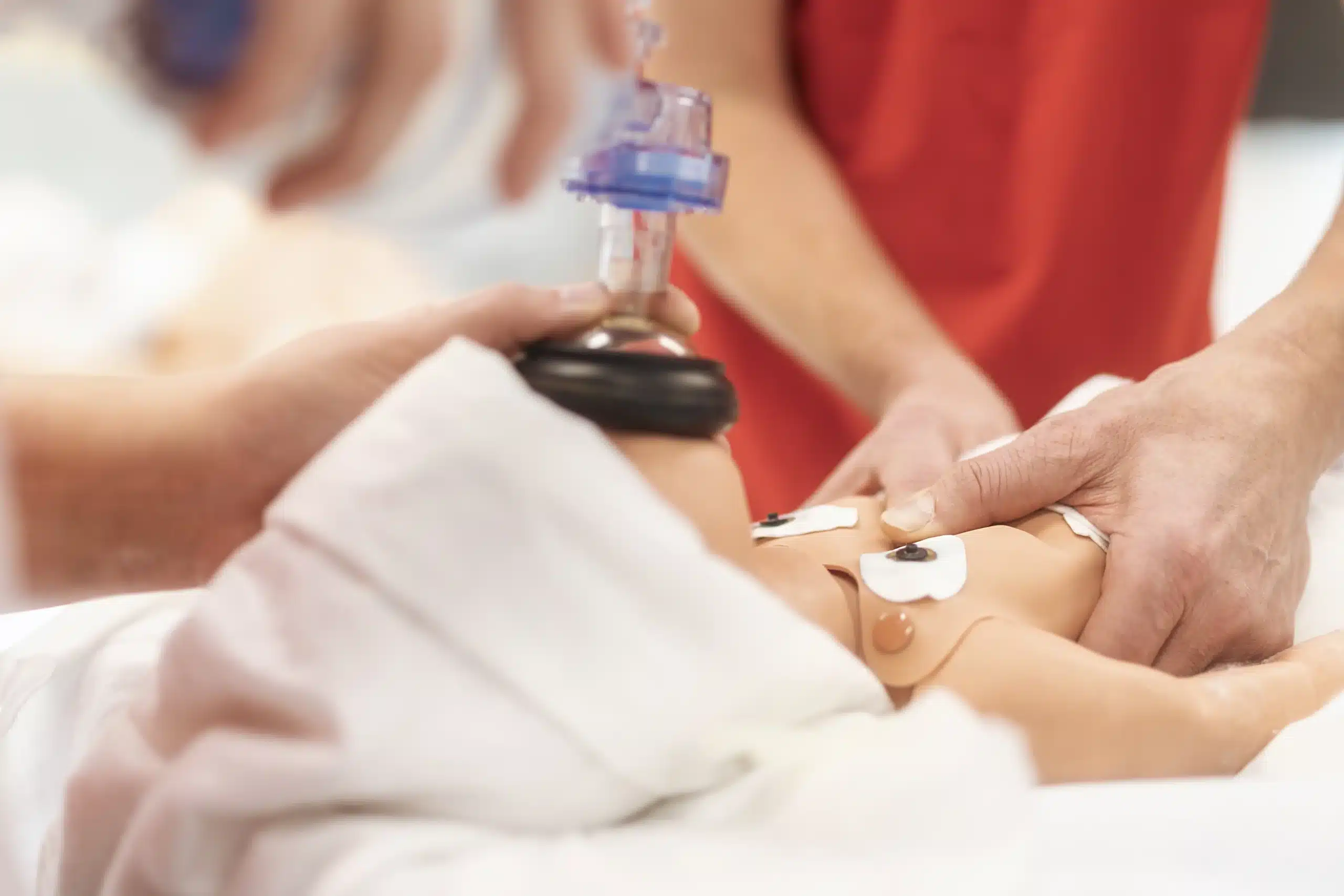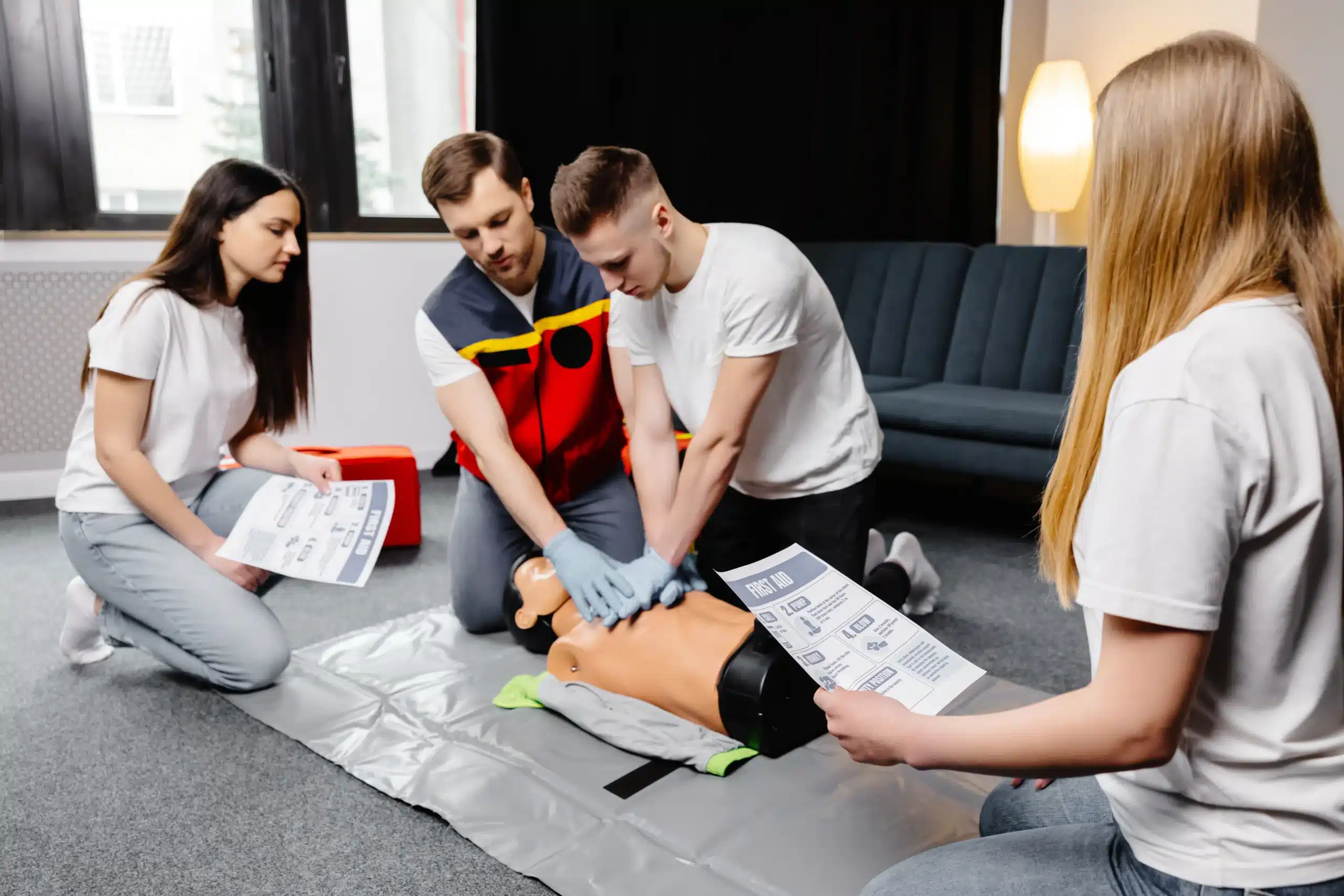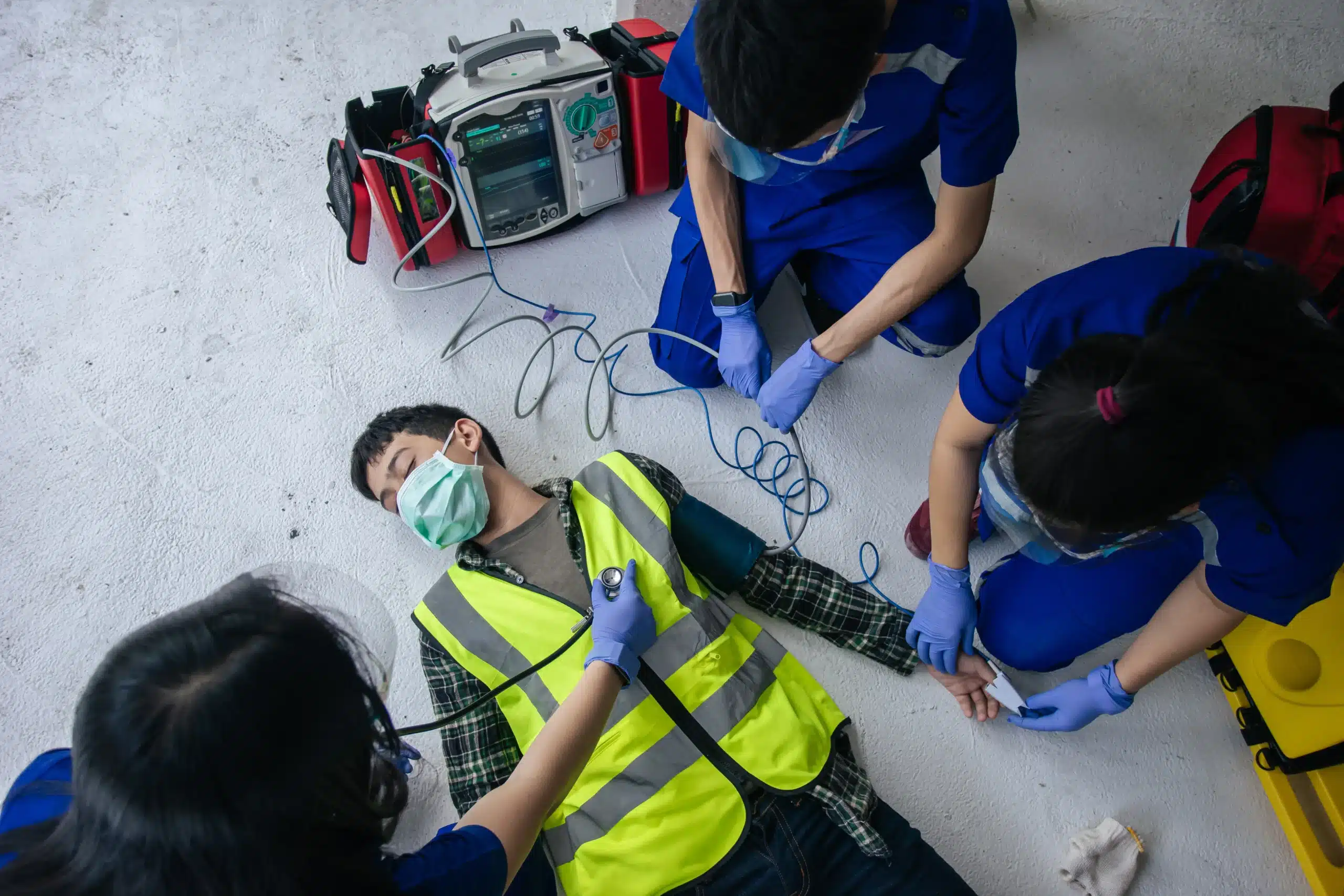Emergencies can happen anytime, anywhere. Are you prepared to respond? BLS training equips you with the skills to provide immediate care during life-threatening situations. This guide simplifies the process of finding “bls training near me,” understanding the core components of BLS, and choosing the right course for your needs. We’ll also explore how to maximize your training to ensure you’re confident and ready to act when it matters most. Whether you’re a healthcare professional or want to learn essential lifesaving skills, this guide is your starting point.
Key Takeaways
- BLS training empowers you to handle emergencies: It provides essential skills like CPR, AED use, and first aid, applicable in various settings. Find a course that matches your learning style and schedule, whether in-person, online, or a blend of both.
- Select your BLS course strategically: Consider factors like instructor experience, comprehensive content, and hands-on practice opportunities. Explore cost-effective options like group discounts or low-price guarantees.
- Maintain your skills through regular practice: Refresh your training periodically, even if recertification isn’t immediately due. This ensures you remain confident and prepared to respond effectively in emergencies.
What is BLS Training?
Basic Life Support (BLS) training equips you with the skills to respond to life-threatening emergencies. It’s a crucial step in the chain of survival, directly impacting patient outcomes. BLS certification courses are typically OSHA, ILCOR, and ECC compliant and recognized nationally and internationally. This two-part course structure offers flexibility when reviewing CPR training.
Core Components and Skills
BLS training covers essential skills, from the basics of CPR and first aid to using an AED. You’ll learn about scene safety, a critical skill in any emergency. The curriculum also emphasizes critical thinking, teamwork, and the legal aspects of providing care. These combined skills empower you to confidently assess and manage emergencies.
Importance for Healthcare Professionals and the Public
For healthcare professionals, BLS certification is often a job requirement, ensuring they can deliver immediate, high-quality care in emergencies. This directly impacts patient survival and recovery. BLS training isn’t just for medical professionals; anyone can benefit from learning these lifesaving skills. It allows individuals to respond effectively in emergencies, potentially bridging the gap until professional help arrives. Studies show that BLS training enables trainees to react quickly and efficiently when BLS is needed, making a profound difference in the outcome of an emergency. At Morgan Hill CPR classes, we offer BLS certification courses designed to meet the needs of both healthcare providers and the general public.
Find BLS Training Near You
Finding the right BLS training program is easier than you think. Several reputable organizations and institutions offer courses, so you can choose the best fit for your schedule and learning style. Here’s a breakdown of where to look:
Morgan Hill CPR Classes
If you’re in Morgan Hill, San Jose, or Gilroy, California, Morgan Hill CPR Classes offers various American Heart Association (AHA) certification courses, including BLS. As a woman-owned AHA Training Center, they focus on high-quality instruction and convenient scheduling, with daily classes in over 60 cities and a low-price guarantee. You can typically expect BLS certification courses to range from $70 to $100, but checking directly with the training center for the most up-to-date pricing is always a good idea. They also offer discounts for group CPR classes. For information on how to prepare for your course, visit their Course Prep page.
American Red Cross
The American Red Cross is another excellent resource for BLS certification and renewal. They provide training designed for healthcare providers and first responders, with options for in-person training and a blended Simulation Learning experience (online coursework combined with in-person skills sessions). They also offer customizable training programs for organizations.
Local Hospitals and Community Colleges
Your local hospitals and community colleges often offer BLS training courses. Many providers base their programs on AHA guidelines, ensuring a solid foundation for your training. Check with hospitals and community colleges in your area—for example, those in Morgan Hill, which are known for their comprehensive CPR and first-aid curricula.
Online Training Platforms
For those who prefer flexible learning, online BLS training platforms provide a convenient alternative. These courses typically cover essential life-saving techniques like CPR and AED use for adults, children, and infants. One benefit of online training is the ability to study at your own pace, anytime and anywhere. Make sure the course you choose is nationally accepted and aligns with current BLS guidelines. ACLS Medical Training is one example of a platform offering online BLS certification.
Choose the Right BLS Course
Finding the right BLS course means understanding your learning style, schedule, and budget. Let’s break down the key factors to consider when making your decision.
In-Person, Online, or Hybrid?
Think about how you learn best. Do you thrive in a hands-on, classroom environment? Or do you prefer the flexibility of online learning? Many providers offer a blend of both. For example, the Red Cross offers “Simulation Learning,” combining online coursework with in-person skills sessions. The American Heart Association (AHA) also uses both online and in-person components, ensuring you get well-rounded training and can put your skills to use in real-life scenarios. A hybrid approach lets you learn at your own pace while still getting practical experience. At Morgan Hill CPR Classes, we emphasize hands-on training in our BLS certification courses.
Course Duration and Time Commitment
BLS courses typically run between 2.5 and 4.5 hours. If you’re already familiar with the material, a “Challenge” option might be available. This allows you to study independently and then take a written exam and skills assessment. This can save time for those with prior experience. Check with your chosen provider to see if they offer this faster pathway. We offer various scheduling options at Morgan Hill CPR Classes to fit busy schedules. For those looking for a quick overview before their class, we recommend reviewing our course prep materials.
Costs and Group Discounts
BLS course fees typically range from $70 to $100, depending on the provider and format. Look for group discounts if you’re training with colleagues or friends. This can be a good way to lower the cost. We believe that quality training should be accessible, which is why we offer a low-price guarantee.
Certification and Renewal
After successfully completing your BLS course, you’ll receive an AHA BLS Provider certification card, valid for two years. Remember to renew your certification before it expires. Renewal courses are usually available within 30 days of your expiration date. Staying current with your certification keeps your skills sharp and up-to-date. For more information on BLS certification and renewal, take a look at our detailed guide.
Prepare for Your BLS Training
Getting ready for your BLS training doesn’t require intense preparation, but understanding the process and knowing what to expect can make your experience smoother and more effective. Here’s a breakdown to help you feel confident and prepared:
What to Expect
BLS training is typically a two-part course offering flexibility in how you review the material. The training blends independent study with in-person skills practice and assessment. While often used interchangeably with CPR, BLS training leans toward a healthcare-provider level and covers a broader range of scenarios. Think of it as CPR training plus essential skills for healthcare settings. You’ll learn the fundamentals of CPR but also delve into topics like team dynamics and recognizing the signs of a medical emergency. More information on BLS training can be found on resources like Donedesk.
Equipment and Materials
Most BLS courses provide the necessary training equipment, including mannequins for CPR practice and AED trainers. However, it’s always a good idea to check with your chosen training center about specific materials. The curriculum covers a range of essential skills, from CPR and first aid to using an AED and ensuring scene safety. You’ll also develop critical thinking skills and learn how to work effectively as part of a team. This comprehensive approach prepares you to respond confidently in various emergency situations. The Red Cross offers a good overview of what BLS certification entails.
Tips for Certification
Before your class, browse the training center’s website for schedules, locations, and course details. Booking your class in advance is always recommended, especially if you have a specific deadline for certification. If your workplace requires BLS certification, confirm with your employer that the course you’re considering meets their specific requirements. Some online BLS certification courses offer a convenient and affordable option, but it’s crucial to verify their acceptance. ACLS Medical Training offers more information on online BLS certification. Finally, take advantage of any available resources to prepare, such as pre-course materials or practice sessions. Thorough preparation will help you get the most out of your training and confidently apply your new skills.
Maximize Your BLS Training
Getting your BLS certification is a great first step, but how do you ensure you’re getting the most out of your training? These tips will help you approach your training strategically, leading to better skills retention and preparedness for real-life emergencies.
Evaluate Instructor Qualifications
Look for instructors with extensive experience and certifications from reputable organizations like the American Heart Association. A qualified instructor can make all the difference in your learning experience. Your Basic Life Support (BLS) Certification course should be OSHA compliant and follow ILCOR and ECC guidelines. It should also be nationally or internationally accepted. Doing your homework upfront ensures your certification will be recognized wherever you need it. Our BLS certification course meets these standards, providing a solid foundation for your training.
Assess Course Content and Materials
A comprehensive BLS course should cover core skills like CPR, AED use, and airway management. Make sure the course materials align with current guidelines, like those from the American Heart Association, to ensure you’re learning the most up-to-date techniques. Many providers in Morgan Hill base their programs on these guidelines, giving you confidence in the quality of your training. Review our course prep materials to get a head start.
Leverage Real-Time Feedback
Effective BLS training goes beyond lectures and demonstrations. Hands-on practice with feedback is essential for mastering the skills. If possible, look for courses that incorporate real-time feedback tools, such as manikins with sensors. Studies have shown that this type of feedback significantly improves skill acquisition, particularly for chest compression depth.
Refresh Your Skills Regularly
BLS skills can deteriorate over time, so regular refresher courses are crucial. Even if you don’t need recertification immediately, consider taking a refresher course every six months to a year. This will help maintain your proficiency and confidence in responding to emergencies. Research00716-7/fulltext) highlights the importance of ongoing practice for optimal skill retention. Check our low price guarantee and consider our discounts for group classes, which can be a great option for workplaces or community groups.
Related Articles
- BLS Certification San Jose: Your Ultimate Guide – Morgan Hill CPR Classes
- BLS Renewal San Jose: Your Easy Guide – Morgan Hill CPR Classes
- HeartCode BLS in Morgan Hill: Your Complete Guide – Morgan Hill CPR Classes
- BLS Certification in Morgan Hill: Your Complete Guide – Morgan Hill CPR Classes
- Basic Life Support in Gilroy: The Complete Guide – Morgan Hill CPR Classes
Frequently Asked Questions
How often do I need to renew my BLS certification? BLS certification is typically valid for two years. Plan on recertifying before your card expires to maintain your credentials and keep your skills current. Renewal courses are usually readily available.
What’s the difference between BLS and CPR training? While the terms are often used interchangeably, BLS training is generally geared towards healthcare providers and encompasses a broader scope than basic CPR. BLS builds upon CPR fundamentals, adding skills like airway management and the use of bag-valve masks, along with a greater emphasis on team dynamics and recognizing the signs of various medical emergencies. Think of BLS as CPR training plus essential skills for healthcare settings.
Is online BLS training a good option? Online BLS training offers flexibility and convenience, making it a viable option for many. However, ensure the course you choose is accredited by a recognized organization like the American Heart Association and includes a hands-on skills assessment component. This blended approach ensures you receive both theoretical knowledge and practical experience.
What should I expect during a BLS course? BLS courses typically involve a combination of independent study, classroom lectures, demonstrations, and hands-on practice. You’ll learn essential lifesaving skills such as CPR, using an AED, and basic airway management. Expect to actively participate in scenarios and simulations to reinforce your learning.
How can I find BLS training near me? Several options exist for finding BLS training. Check with your local hospitals, community colleges, and organizations like the American Red Cross or Morgan Hill CPR Classes. Online directories and training platforms can also help you locate certified instructors and courses in your area.
